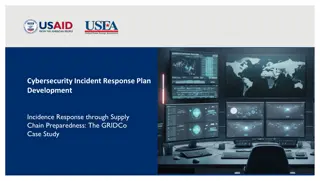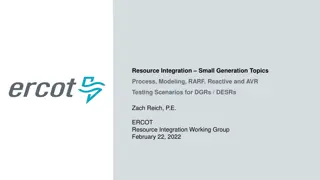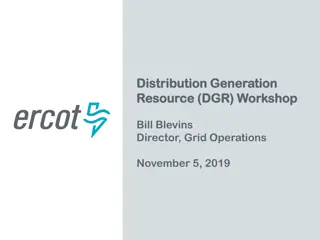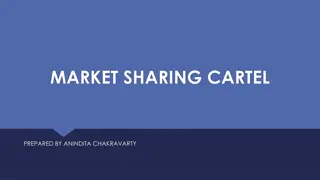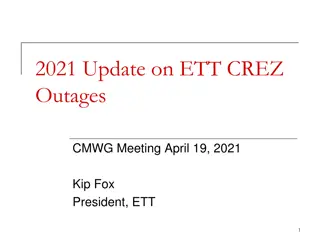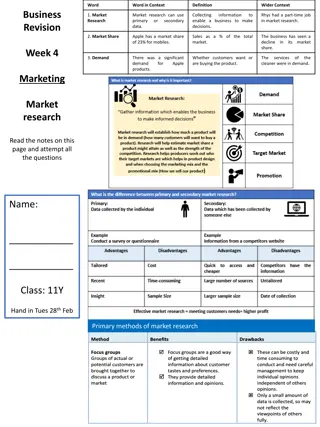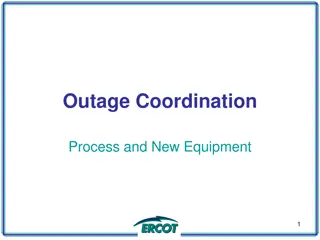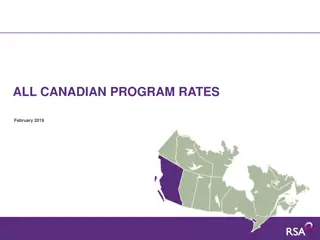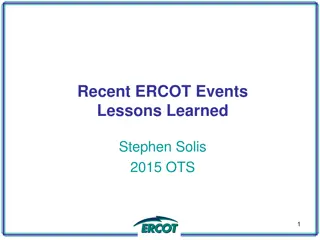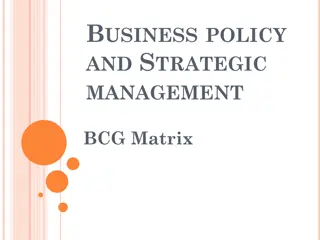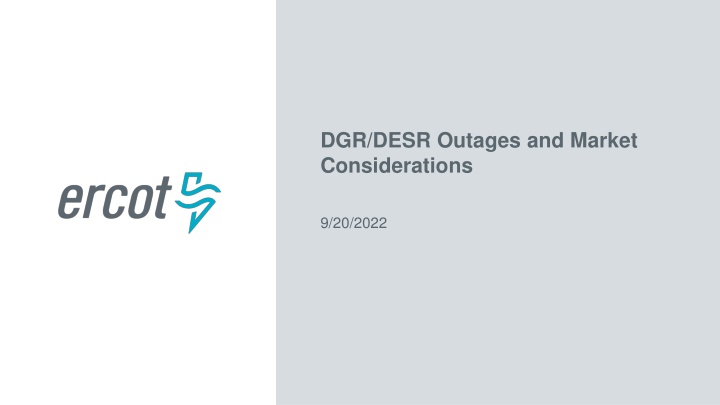
Transmission Modeling Considerations for DGRs and DESRs
Explore the key issues and market impacts of transitioning to simplified modeling of Distributed Generation Resources (DGRs) and Distributed Energy Resource Systems (DESRs) in the transmission network. Understand the challenges in depicting alternative paths during outages and the coordination required between key stakeholders. Learn how the ERCOT system handles the participation of DGRs and DESRs in the market and the importance of modeling paths to the transmission system for their engagement.
Uploaded on | 0 Views
Download Presentation

Please find below an Image/Link to download the presentation.
The content on the website is provided AS IS for your information and personal use only. It may not be sold, licensed, or shared on other websites without obtaining consent from the author. If you encounter any issues during the download, it is possible that the publisher has removed the file from their server.
You are allowed to download the files provided on this website for personal or commercial use, subject to the condition that they are used lawfully. All files are the property of their respective owners.
The content on the website is provided AS IS for your information and personal use only. It may not be sold, licensed, or shared on other websites without obtaining consent from the author.
E N D
Presentation Transcript
DGR/DESR Outages and Market Considerations 9/20/2022
Agenda Review of old-style and new-style DGR/DESR modeling Old-style are modeled on the distribution system New-style are modeled on the transmission system Outage considerations for TSPs and REs Market impacts of transmission outages for DGR/DESRs 2 PUBLIC
Transitioning to Simplified Modeling of DGR and DESRs TSP Station Old-Style New-Style Transmission Network Transmission Network DGR Station TSP Station Single substation with load and generator modeled at transmission voltages CIM Load CIM Load Line Multiple substations with load and generator modeled at distribution voltages 3 PUBLIC
Key Issues of Distribution-Modeled DGRs and DESRs Distribution-level equipment is needed to show the generator s path to the transmission system The pink equipment represents distribution equipment not typically modeled in ERCOT systems. 4 PUBLIC
Key Issues of Distribution-Modeled DGRs and DESRs Additional modeling may be needed to depict alternative paths to the grid caused by outages or switching Coordination is required between the TSP, DSP, and RE to ensure alternative paths are modeled prior to outages. 5 PUBLIC
Key Issues of Distribution-Modeled DGRs and DESRs DGR/DESRs cannot participate in the ERCOT market unless a path to the transmission system is modeled ERCOT s EMS will see the generator as de- energized even if an alternative path is present in the field 6 PUBLIC
Outage Considerations for TSPs and Resources 7 PUBLIC
Enhanced Logic for Transmission-Modeled DGRs and DESRs ERCOT systems have been updated to include special logic for transmission-modeled DGRs and DESRs. DGR RN Grid When de-energized in network applications: 1. Market systems will trust the real-time and COP statuses provided by the generator 2. DGR/DESR s will be dispatched using the EMS s nearby shift factor logic Alternate Distribution 8 PUBLIC
Scenario 1 Transmission Outage on Primary Path - Less Than 60 Days Grid Resource Action Generator QSEs must send accurate resource information (telemetry and COP) reflecting their ability to connect to the grid. TSP Action Provide the typical transmission outage information to ERCOT. Alternate Distribution Scenario 1: DGR/DESR connected to the transmission system via an alternate path 9 PUBLIC
Scenario 2 Transmission Outages Disconnecting DGR/DESR Grid Resource Action Generator QSEs must: Submit outage on Resource Send accurate resource information (telemetry and COP) reflecting their inability to connect to the grid. TSP Action Provide the typical transmission outage information to ERCOT. Distribution Scenario 2: DGR/DESR unable to connect to the grid due to transmission outages 10 PUBLIC
Scenario 3 Distribution Outages Disconnecting DGR/DESR Grid Resource Action Generator QSEs must: Submit outage on Resource Send accurate resource information (telemetry and COP) reflecting their inability to connect to the grid. TSP Action No action needed No path to grid via distribution Distribution Scenario 3: DGR/DESR unable to connect to the grid due to distribution outages 11 PUBLIC
NP3.8.6(3)(a) 3.8.6 12 PUBLIC
TDSP/DSP and RE Coordination Alternative Path > 60 Days Resource Entities are required to submit registration updates if a DGR/DESR will use an alternative path for longer than 60 days. Grid Grid A registration submission is needed to change the associated CIM Load of the distribution resource Primary Alternate Distribution Distribution REs will require advanced notice to ensure registration timelines are met 13 PUBLIC
Market Impact of Outages on Transmission-Modeled DGR/DESRs The following scenarios are only accurate for transmission- modeled(aka new-style ) DGR/DESRs 14 PUBLIC
Recap: Transmission-Modeled Representation of DGR and DESRs TSP Station Distribution-Modeled Transmission Network Transmission-Modeled Transmission Network DGR Station TSP Station Single substation with load and generator modeled at transmission voltages CIM Load CIM Load Line Multiple substations with load and generator modeled at distribution voltages 15 PUBLIC
Enhanced Logic for Transmission-Modeled DGRs and DESRs ERCOT systems have been updated to include special logic for transmission-modeled DGRs and DESRs. DGR RN Grid When de-energized in network applications: 1. Market systems will trust the real-time and COP statuses provided by the generator 2. DGR/DESR s will be dispatched using the EMS s nearby shift factor logic Alternate Distribution 16 PUBLIC
Scenario 0: No Outages Primary connection with no outages Alternate connection with no outages DGR RN DGR RN Grid Grid Primary Alternate Distribution Distribution No indication to ERCOT systems that the load has moved from primary connection SCED: Energy dispatched using original CIM load shift factor if on-line in telemetry AS accounted as being provided if on-line in telemetry RUC: DAM: Energy dispatched using original CIM load shift factor if on-line in COP AS in COP accounted as being provided if on-line in COP Energy dispatched using original CIM load shift factor Can participate in AS market 17 PUBLIC
Scenario 1: Resource Node De-Energized Resource Node de-energized DGR available no outage and on-line COP status Load de-energized DGR RN Grid Alternate Distribution DAM: RUC: SCED: Energy dispatched using EMS- calculated nearby shift factor AS accounted as being provided if on-line in telemetry Cannot participate in energy market Can participate in AS market Energy dispatch to 0 AS in COP accounted as being provided if on-line in COP Same Outcome as Scenario 2 18 18 PUBLIC
Scenario 2: Resource Node Energized & Load De-Energized Resource Node energized DGR available no outage and on-line COP status Load de-energized DGR RN DGR RN Grid Grid Alternate Alternate Distribution Distribution DAM: RUC: SCED: Energy dispatched using EMS- calculated nearby shift factor AS accounted as being provided if on-line in telemetry Cannot participate in energy market Can participate in AS market Energy dispatch to 0 AS in COP accounted as being provided if on-line in COP Same Outcome as Scenario 1 19 19 PUBLIC

